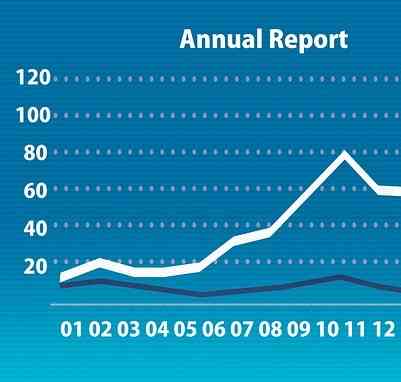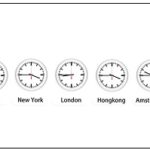The one question that runs through the mind of all the investors out there is “How to avoid loss in the stock market?” People pay thousands, to get the answer to this question. So we bring you the article which is a complete guide on how to avoid loss and earn money in the stock market as described in the book “How to avoid loss and earn consistently in the stock market” by Prasenjit Paul. Read till the end and we assure you that you will get all your answers.
CHAPTER 1
HOW TO AVOID LOSS IN THE STOCK MARKET
The author rightly says that almost all the billionaire got their fortunes from the stock market, either directly through direct stock investing like Warren Buffett or indirectly by listing their company on the stock market like Mark Zuckerberg (FB) and Bill Gates (Microsoft). But even after this, people consider the stock market as illogical or as another form of gambling just because they suffered a loss (80% of retail investors in India end up losing their money whereas only 20% of them earn).
Retail investor refers to those who engage in a different full-time job and invests a portion of their savings into the stock market.
HOW ROHIT (A RETAIL INVESTOR) LOST INR 10,00,000/- IN THE STOCK MARKET!!

PHASE 1 – Rohit invested a total of 1.5 lakh rupees through his stockbroker friend who used to invest on his behalf. Initially, everything ran smoothly but soon he lost 55% of his money including brokerage and other charges.
PHASE 2 – Rohit followed newspaper and other business channels. After seeing the bull trend he got excited to make quick money and went for intraday trading. Even after trading 70% successfully, he ended up at a 20% loss because the gain in 5-6 trading got wiped away by 2-3 loss-making trades.
PHASE 3 – Now he accumulated well-known stocks and planned to hold them for the next few months. His portfolio showed a gain of 20% over 10 months. Then he came across an attractive offer of getting a loan against shares. He took the loan. Initially, everything went well but then the market took a U-Turn because of which Rohit panicked and was forced to sell his shares to maintain collateral and ended up with a 25% loss.
PHASE 4 – Rohit now decided to go with a professional stock tips provider. One such provider mentioned making money in a downward-trending market through Futures and Options. Rohit booked two trial calls and both of them hit the target. He got confident and then invested a larger sum. He suffered a 90% loss in the next 15 days.
THINGS TO NOTE
- No matter whether you get a gain or loss, the broker always gets profits. The more you trade the more money he makes. So trusting your broker friend can prove costly.
- For a retail investor, intraday trading is almost a sure-shot way of accumulating loss.
- Investing with borrowed amounts is dangerous practice unless you have mastered investing.
- Futures and Options (F&O) are worst for retail investors. F&O is meant for institutional investors and hedge funds.
We would recommend you read our article on terminologies used in the Stock Market if you are a beginner. Click here to read
WHY TRADING IS SURE-SHOT WAY OF LOSING MONEY FOR RETAIL INVESTORS?
- Lack of time and expertise
- Not considering brokerage and taxes while calculating profit or loss.
- They follow free trading tips that are dangerous.
- Gets attracted towards paid trading tips scam and ends up losing both the invested amount and the subscription fee.
TRAPS TO BE AVOIDED
- Temptation from friends, colleagues, and neighbors: Everyone will share that they gained INR 10,000/- from this stock in 5-10 days but they won’t share what they lost.
- Temptation from broker: No broker will tell you to purchase a stock and hold it for 2-3 yrs because in that he won’t make money.
- Temptation from a so-called analyst: They will tell you to invest in Bull Run and won’t tell you to buy stocks in a bear market when the stocks are cheaper.
- Temptation from a stock tip provider: They sell their tips using false promises of 50% or more returns. Because if such is the case then the tip provider should be a billionaire.
- Overconfidence: Don’t get overconfident by returns during the bull run as when the bear market comes you may end up losing everything you made.
The only way to earn money consistently from the stock market –
Invest in great businesses and hold them for an appropriate period like Warren Buffett who made his fortune with a 22% annualized return over 50 yrs.
CHAPTER 2
THE STOCK MARKET IS NOT RISKY AT ALL

- Investing in FDs and post offices is believed to give safe and steady returns. But we never take into account inflation and taxes. Considering these factors net return can become zero or even negative.
- Equity investment can’t be neglected at all because in the past decades, it has been observed that equity investment has overtaken all other forms of investment when it comes to giving returns in long term.
- After studying for 20 years of your life you get a job, but when it comes to investing, you do it without any knowledge which leads to failure.
CHAPTER 3
FIRST STEP IN PICKING WINNING STOCKS
- Instead of profit and sales figures which can be manipulated, look for ROE (Return on Equity – It is the net income returned as a percentage of shareholders equity). Go for stocks with ROE greater than 20%.
- Search companies with competitive advantage like Apple. Increasing ROE over the last 5-10 yrs with greater operating margin and cash flow will help you recognize companies.
- Check debt to equity ratio – It is ratio total liabilities to total equities. If it is more than 1and is increasing over last few years then do not go for such company.
CHAPTER 4
HOW TO EVALUATE MANAGEMENT

You can’t visit the offices of all the companies you hold stocks of, to evaluate the management. Nor you should depend upon the meeting of the CEO with a stock analyst as the CEO will always present a good picture.
Then how to evaluate the management?
1. Shareholding Pattern
Check on website of BSE www.bseindia.com
If promoters (those who incorporated the company & their relatives) are increasing their shares, the result will always be good. Being the promoter, they know what is going on in the company.
If promoters are decreasing their share then it can have both negative and positive impacts. So dig deeper if promoters are decreasing their shares.
Example
- The Satyam Scandal – The promoters’ shares decreased from already very low percentage of 10.70% in June 2008 to 2.70% in December 2008. And consequently, the stock price dropped by 77.7% during Jan 2009.
- Promoters of Page industries reduced their shares during 2012-2015 but their share price increased by 200%.
Institutional investors
You have to study combined FIIs (Foreign Institutional Investors) and (Domestic Institutional Investors). If they are increasing their shares then it will have a positive impact and vice-versa
Retail investors
- If the percentage of the retail investors is increasing then the stock will fall and vice-versa
- Pledging of shares (shares as collateral to get loans): If the company has pledged shares then stay away from the company.
2. Dividend History and Tax rate
Check Tax rate from financials of the company and dividend history from BSE or NSE website.
A higher dividend payout ratio with an increasing dividend rate means management is friendly with shareholders.
Indian corporate tax rate stands around 30% and if a company is showing the tax rate below 30% of net profit then you need to research more.
CHAPTER 5
VALUATION – IT MATTERS MUCH
If you invest in the best company, it still can go wrong if you purchase the stock at the wrong price.
Example – Infosys showed growth from 2000-06 but gave a negative return because due to optimism the stock price reached a non-sustainable range.
A. COMMON VALUATION TOOLS

1. Price to Earning (PE) ratio – Current market price / Earnings per share; Available on financial websites.
But PE ratio alone cannot determine the valuation of a stock. It is used in combination with the following –
Compare with its historical average – If the current PE ratio is less than the average of the last 3-5 yrs then the company is worth investment. Comparison with industry peers or with a broader market (SENSEX) is not very reliable.
Drawbacks of PE ratio
- Account tricks – E stands for earning and companies can easily play with this factor.
- One-time income/expense – Look for one-time income or expense as it can decrease or increase the PE ratio respectively.
- Cyclical firms – Companies with fluctuating earnings are called Cyclical firms. Car manufacturing companies come under this category. So if you see a low PE ratio of such a firm, don’t rush to buy its stocks as its earnings may drop in the future.
2. Price to Sale (PS) ratio – Current price of stock / Sales per share
It is calculated by dividing the market capitalization of a company by its reported sales. It is best to use the PS ratio while studying the cyclical industry.
Advantages
- It can’t be manipulated as companies manipulate profit but not the sales figure.
- Sales are less volatile than earnings.
Disadvantage
- Total sales can’t ensure the profitability of the company.
- Check net profit margin as it differs from company to company and sector to sector. Most retailers operate at lower margins, therefore, show less PS ratio while software business operates at a high margin and therefore show high PS ratio.
3. Price to Book (PB) ratio – Compares stock price with its book value per share.
Book value is the amount each shareholder will get if company liquidates completely.
Lower the ratio, better the investment opportunity.
Best usage
- For banking or NBFC (Non-Banking Financial Corporations) stocks – Banks have huge liquid assets with values as per the current market rate, therefore the PB ratio gives a clear picture of the net worth of the bank.
- Capital intensive business – Companies with huge tangible assets can be assessed but these assets are not marked to market so it can sometimes be misguiding.
Drawback
- Service sector – No significance as assets is intangible.
- Inaccurate measure – Some tangible assets are not registered at their current market price, so this ratio can be misleading in such cases.
B. VALUATION TECHNIQUES
Methods of valuation like discounted cash flow method, asset-based valuation, etc. are of no use practically. The business world is so dynamic that it is impossible to project the earnings of a company in the future with accuracy. The technology change, government change or high competition can even remove a company from the market altogether.
EASIEST WAY TO JUDGD VALUATION

1. Compare valuation with its own historical average
In the last 20 yr average, PE of Sensex remained around 18. PE of Sensex is calculated by dividing the total market capitalization of Sensex stocks by the total net profit of all 30 Sensex stocks.
- Whenever it crossed 25, a market crash followed. At the peak of the dotcom bubble (March 2000) and the peak of the 2007-08 bull run, PE of Sensex crossed 25. And on both the occasion, year-long market crash followed.
- Whenever P.E of Sensex reaches below 15, it was followed by a year-long bull-run. During December 2011, Sensex was at 15,500 with PE dipped below 15. By August 2014 Sensex was around 27,000 giving a return of around 75% within 3 and half years.
2. Compare PE with average growth rate
It is almost similar to the concept of Price to Earnings Growth (PEG) ratio.
PEG Ratio = Price to Earnings ratio / Earnings Growth rate.
The only modification is that the last three years’ average Earnings Per Share (EPS) growth rate is considered.
PEG ratio combined with historical valuation will provide better insight on the valuation.
- Current valuation (PE and PB ratio) < last five years average and PEG ratio < 0.5 then we can conclude that the company is undervalued and can become a great investment bet.
- Current valuation (PE and PB ratio) ~ the average of the last five years valuation and PEG <= 1 then we can conclude that the company is reasonably valued.
- Current P.E > last five years average and PEG >2, then the stock is overvalued. It is always better to avoid such stocks.
- 1< PEG ratio<2 – that the stock is reasonably valued. Check other parameters for an investment decision.
CHAPTER 6
WHEN TO BUY and WHEN TO SELL?
BEST TIME TO BUY
There is no right or wrong time; it is just right or wrong stock.
Prasenjit Paul
No one can predict the exact top and bottom of a stock over a specific period. You can’t buy a stock at the bottom and sell at the top every time. Therefore, buy a top-quality stock as soon as you find one.
Misconceptions to be avoided
- Stocks that are in the 52-weeks high range are not a safe investment- The fact is, if the company continues its growth, then the stock will surely touch lifetime high in the coming months.
- Stocks that are near the 52-weeks low range have greater potential to move up – Educomp around mid-2009 was trading at INR 1000/-. It then dropped to INR 500/- within one year. Investors thought it will again rise but the stock dropped to INR 30 by September 2014.
WHEN TO SELL?
For better opportunity
Don’t get emotionally attached to a stock just because you have been holding it for the past several years. If you find a better stock, then shift to it.
Wrong buying decision
If after investing, you find that the buying decision was wrong then exit from the stock at the earliest. It can be due to wrong financial ratio calculation or wrong assumptions. It doesn’t matter if the stock is up by 20% or down by 20%. Sell the stock at the earliest.
Value is overstretched
One should exit from a stock if the valuation becomes too expensive. During 2007-08, real estate companies like DLF, Unitech were demanding abnormal market capitalization, which is a sign of stretched valuation. During January 2008, Unitech made its lifetime high of INR 546/-. But, in the next 7 years, the stock price dropped by more than 90% to INR 30/-.
Change in fundamentals
If you purchase a stock because of a certain reason be it growth, be it upcoming technology, etc., and then after a few months the original reason to buy the stock is not valid then you should exit from the stock.
Changes in management
Great management can turn an ordinary business into extraordinary while bad management can turn a good business into a bad one. Under N. R. Narayana Murthy, Infosys achieved several new heights. But when Mr. Murthy stepped down, the company was replaced by TCS as the most valued IT Company in India.
Develop a Pre-defined Exit Strategy While Investing in Stocks
You should have a pre-defined exit strategy before investing. A pre-defined exit strategy is a must for every investor. Suppose, you bought a stock because of its 25%+ growth rate then, you should sell it whenever the growth slows down.
MISKTAKES TO BE AVOIDED

- Do not invest in previous bull market stocks as there are a number of stocks that lead the bull market once but then never reached those highs again. Example: Wipro.
- Holding losers too long – Everybody fears losing money but due to this fear they end up losing more money. Let me explain with an example: Suppose, you purchased a stock of INR 200/- and the next month it drops to INR 100/-. Most investors will either wait so that the stock price increases and they minimize loss or they will buy more shares to decreases the effective buying price. But both are deadly mistakes.
- Selling winners too early – If you have 2 shares showing 20% profit and 2 shares showing 20% loss then what should be the order of selling. People rush towards booking profit and end up accumulating poor stocks.
It is not necessary that “what falls down will move up”. What falls today may continue to fall tomorrow if the underlying business is not so strong.
Prasenjit Paul
DO’S AND DON’TS TO AVOID LOSS IN STOCK MARKET
a. Don’t check the daily price quote – An investor generally goes two to three times through the stock prices daily. This can affect him in the following ways –
- Early profit booking – Everyone fears losing money due to which you can get eager to book small profits from stock which would have multiplied your investment over the long run.
- Premature exit – If you buy a stock after studying the business and it does not move for let’s say 7-8 months then it is hard to hold your conviction. And you may exit from the stock prematurely if you check the stock price daily. Legendary investor, Warren Buffet, once mentioned, “If you can’t hold a stock for the next ten years then don’t buy it for the next 10 minutes.”
- Don’t emphasize on the purchase rate – You analyzed a stock and you find everything right with it. You choose to buy it and after the purchase, it drops. Now as per your knowledge, the stock should go up and you should stick with it. But if you check the stock price daily then you will get tempted to exit to minimize the loss.
b. Don’t try predicting the market direction – Don’t think that if Sensex is moving up so will your company and vice versa. Your investment totally depends on the business of that company. During 2011, Sensex gave negative returns to various FMCG stocks, Page industries gave more than 50% returns.
c. Love bear market – Retail investors invest while the market is moving up and prefer to get out when the market is falling. But you should love the bear market as such opportunities come once or twice in 10 years. Investment in mediocre companies can also produce 100%+ return over the next 1-2 years. Stock selection also gets easier because most of the companies are available at a low valuation.
CHAPTER 8
HOW TO CONSTRUCT YOUR PORTFOLIO

Diversification does not necessarily mean having 40-50 stocks or more stocks in your portfolio. A properly diversified portfolio must have a limited number of stocks but across different sectors.
1. Problem with huge number of stocks in portfolio
a. Difficulty in tracking the stocks properly – It requires at least 30 mins per week per stock to follow news, competition, management interview, monthly results, etc. So if you have 40 stocks, it will require 1200 minutes which is around 3 hrs per day. For a working individual, it is difficult to give 3 hrs per day after a full-time job.
b. Negatively affect your overall return – Remember, the number of high-quality stocks will always be less than poor stocks. So if creating a portfolio with let say 40 stocks, then the number of poor stocks will be high which will minimize the gains from the high-quality stocks.
World’s most successful billionaire investor, Mr. Warren Buffet always preferred to keep 10-15 stocks in his portfolio. In spite of having 40-42 stocks, Mr. Rakesh Jhunjhunwala (Indian billionaire investor) restricted 90% of his holdings to 10-12 stocks.
On an average, a retail investor should hold 10-20 quality stocks at a time in his portfolio.
2. Misconceptions amongst Investors
a. Low priced stock is cheap and high priced stock is expensive
People think that an INR 10/- stock is cheap and can generate more return as it has a higher possibility of going to 15 or 20 and a stock of INR 1000/- is already so high therefore won’t give the return.
Contrary Example – Page industries INR 1000/- in Jul 2010 went to INR 7000/- by the end of 2014.
Shree Ashtvinayak Cine’s stock price at INR 7 in 2011, traded at INR 0.7 within the next two years and by 2014 the stock was no longer traded.
b. Investing in low PE stock is called Value investing
Stock with low PE and high dividend yield look cheap statistically but most of the time these have a very low-quality business and their future earnings are doubtful.
c. Large cap stocks always offer safety and steady flow of return
It is believed that large-cap stocks offer a safe & steady flow of return while mid-caps and small caps are highly volatile. But if you compare Atul Auto (small-cap auto stock) with Maruti Suzuki; compare Ajanta Pharma with Sun Pharma, on each occasion you will find the quality small-cap stock outperforming the large-cap stocks.
Suggestion – NEVER divide your portfolio based on market capitalization. It is fine to have all the shares in your portfolio from quality mid-cap and small-cap stocks.
How to protect your portfolio in market crash

It is divided into two parts –
1. Minor Stock Market Crash (Index fall by 5%-30%)
- Don’t sell all your shares to buy at a lower level. It may happen that after you sell, market starts rising and you are not able to enter at a lower level. And frequent buying and selling also increase other related costs.
- Don’t panic. If you can’t handle the volatility of the market, then don’t check stock price daily. Do it just once or twice a week.
- Accumulate high-quality stocks during a market correction. History says you can’t suffer loss if you invest in any stock market crash to earn money.
- The best thing is to hold on to your current position. You can’t buy at the bottom and sell at the top every time.
2. Major Stock Market Crash (Index fall by more than 50%)
- Don’t expect to gain 20%-30% when the market is falling by 50%. Even the best swimmer can’t survive in Tsunami.
- Gold – It can be your best hedge against equity. In the past 30 yrs, it has been observed that gold and stocks mostly move in the opposite direction. So, you can save your money by buying gold during a crash.
If you want to know about best ways to invest in gold then read this article. Click here to read
Avoid these stocks
Stocks to Avoid #1 – High Debt Companies
To fund growth, when a company takes a loan, stay away from such companies because they may perform well in a bull market but the problem arises when the bear market comes.
Stocks to Avoid #2 – Low Promoter Holdings and Microcaps
Avoid stocks of companies in which the combined shareholdings of promoters and institutional investors are less than 20%.
Stocks to avoid #3 – High Promoter Pledging (and increasing)
Check the percentage of promoters’ pledged shares. An increase in it, directly reduces the earnings of the company because the major part of the profit will go into paying the lenders.
Stocks to Avoid #4 – Stocks Touching New Low
Avoid stocks of companies whose shares are continuously falling. Don’t try to catch a falling knife.
Stocks to Avoid #5 – Too Much Popular Stock
Stay away from the stocks about which everyone around is talking. Because in such a situation the stock is sold at PE of 100+ and such stocks are bound to fall.
Stocks to Avoid #6 – Costly Acquisition
Generally, to scale up the business, companies go for acquisitions. Sometimes, these acquisitions are so costly that it becomes difficult to turn around the acquisition into a profit-making deal.
Examples – Tata Steel – Corus, Suzlon – RE Power
CHAPTER 9
IS IT REQUIRED TO FOLLOW AN EQUITY ADVISOR
Based on the time available to you, you will fall under one of the following categories –
Category A
If you can give more than 20-22 hours per week for stock analysis, then you can master the art of trading in 3-5 yrs. No need to go for any equity advisor to earn money in the stock market or mutual fund investment.
Category B
If you can give only 1-2 hours per day, then you should go for an equity advisor, but never follow your advisor blindly. Ask for the reasons behind their recommendations. Check the basic parameters stated above in this article against the recommendations of your advisor. Don’t go for mutual funds as you will get better returns through direct investment.
Category C
If you can’t even dedicate 1 hr per day then either go for a very trustworthy equity advisor or invest in mutual funds to earn money in the stock market.
If you want to know how to select a mutual fund for investment in India then read this article. Click here to read
CHAPTER 10
QUICK FORMULA TO PICK WINNING STOCK

First Step –
Out of 5000+ listed companies, apply the following criteria to make a primary list.
- The last three years’ average Return on Equity (ROE) and Return on Capital Employed (ROCE) both are greater than 20%.
- Debt to Equity Ratio is less than 1. (Or heavily reducing for the last few years)
- Promoters pledge less than 10% of their total shareholdings, or there is a clear indication that it will fall below 10% soon. (Better if it is NIL)
- Last three years compound annual sales growth rate is more than 10%
- Last three years Compound annual profit growth rate is more than 12%.
You will get 40-80 companies matching all the criteria mentioned above
Second Step –
We will check two things – Valuation and Stock Price Movement.
a) Valuation
If the stock has a PE ratio of more than two times of last three years’ average EPS growth then avoid the stock.
b) Stock Price Movement- final and last stage
Only consider stocks for investment having last three years annualized return of more than 10% with the last year’s return being positive.
Two minutes checkup to judge any company –
Before investing, look for these three conditions –
- Average last three years’ Return on Equity (ROE) < 10%.
- Debt to equity ratio > 1 for the last three years and no sign of falling down (rather increasing).
- Promoters pledge more than 30% of their total shareholdings and have no sign of falling down (rather increasing).
Based on the above parameters, you should decide as follows –
- If all the parameters are true, avoid the stock. And if you already own it, then exit immediately.
- If any two parameters hold true, then avoid the stock.
- If only one parameter holds true, go for an in-depth analysis.
Important Points to Remember –
- The above method is not applicable for banking and NBFC stocks as a parameter like debt-to-equity ratio is irrelevant for them. Consider parameters like NPA, NIM, etc. for these
- During a bull market, only a few companies will pass the valuation test.
- Companies not passing the above test will not necessarily generate negative returns
If you liked our article “How to Avoid Loss & Earn Consistently in Stock Market- Book” then feel free to share it with your family, friends, and peers. Do share your thoughts on the article in the comment section below.
Wealthdrift does not claim any rights in the book, How to Avoid Losses and Earn Consistently in Stock Market, all of which are expressly reserved by the author, Prasenjit Paul.



